The Hereford is a breed of cattle that originated in Herefordshire, England, in 1742. Originally used as a multi-purpose breed, Hereford cattle are now bred specifically for their meat. They can be easily identified by their mostly dark red body and white face. The Hereford is smaller than the similar Simmental cattle, and in general has less white spotting and tends to be darker red in color too. Traditionally Herefords have an all-white face, but this trait leads to an increased risk of eye cancer in places with bright sunlight, so some breeders prefer Herefords that have red pigment extending around the eyes. Herefords are hardy and adaptable to a wide range of environments and are excellent foragers. They also have a generally docile disposition, mature early, and are long lived.
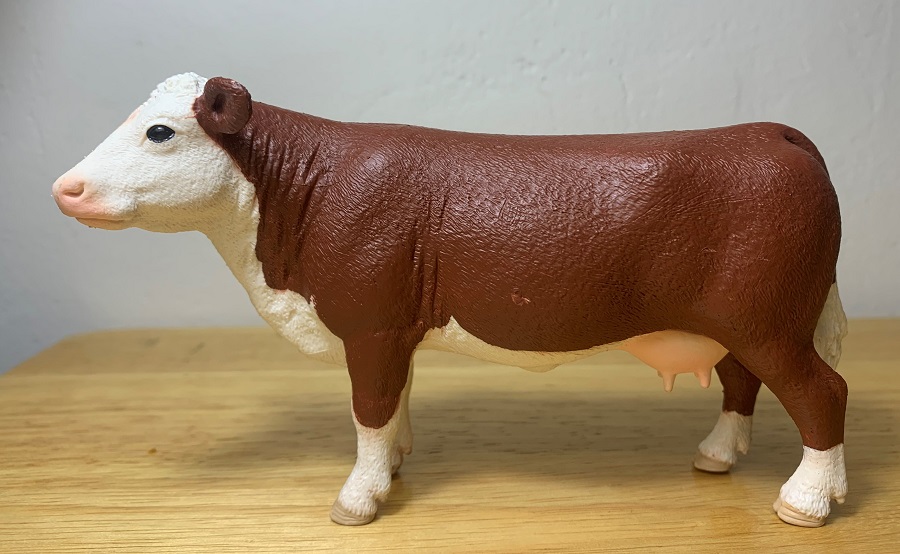
The first job I ever had was working at a beef cattle operation as a farm hand. I ended up working that job for over a decade, and it remains the best job I ever had. That farm predominantly raised Hereford and angus cattle, so as a result I now have an affinity for the Hereford breed, which I always found visually appealing due to the contrast in their red and white coloration. Today we’re looking at the Schleich 2017 Hereford cow. I came across this figure in the same way I usually come across cow figures, while buying chicken feed at Tractor Supply. Although Schleich seems to be waning in popularity in this hobby they do have a good track record with cattle figures and so far, I’ve been happy with every Schleich cow or bull that I’ve purchased, including this one.
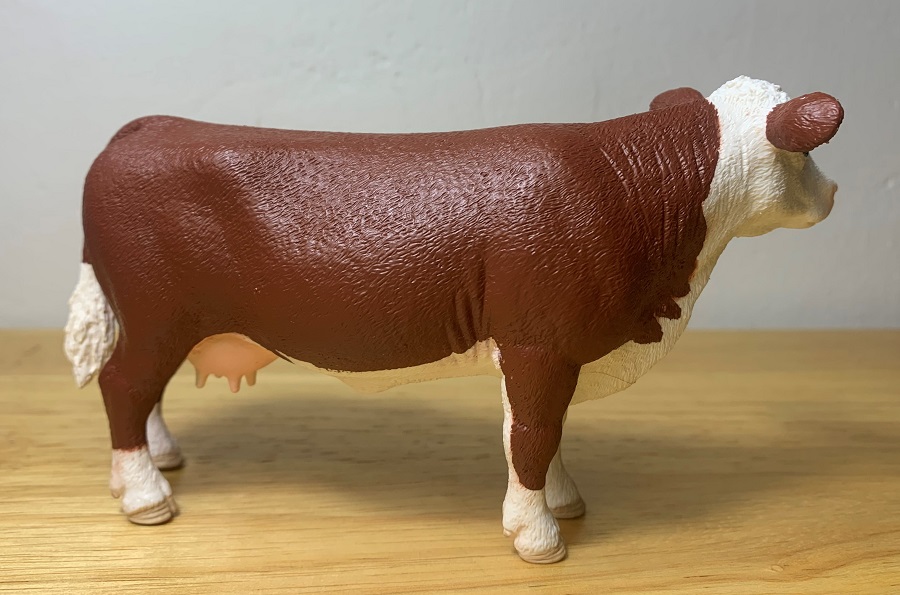

The Schleich Hereford measures 5” (12.7 cm) from nose to rump and stands 3” (7.62 cm) tall at the shoulder. Actual Hereford cows average 1,540 lbs. (702 kg) and bulls average 2,200 lbs. (887 kg). Historically the breed was larger, with one bull weighing in at 3,640 lbs. (1,651 kg). Hereford cows stand 4.5’ (1.3 meters) tall at the shoulder. This puts the Schleich Hereford at 1/18 in scale.


The Schleich Hereford is presented in a fairly static pose with the head gently looking leftward and ears perked inquisitively outward. All the hallmarks of the Hereford breed are nicely illustrated here. The body has a blocky, sturdy build with a straight topline along the back. The legs are stocky and strong, and the face broad. The chest is appropriately plump and rounded and the hips are visible under the skin.
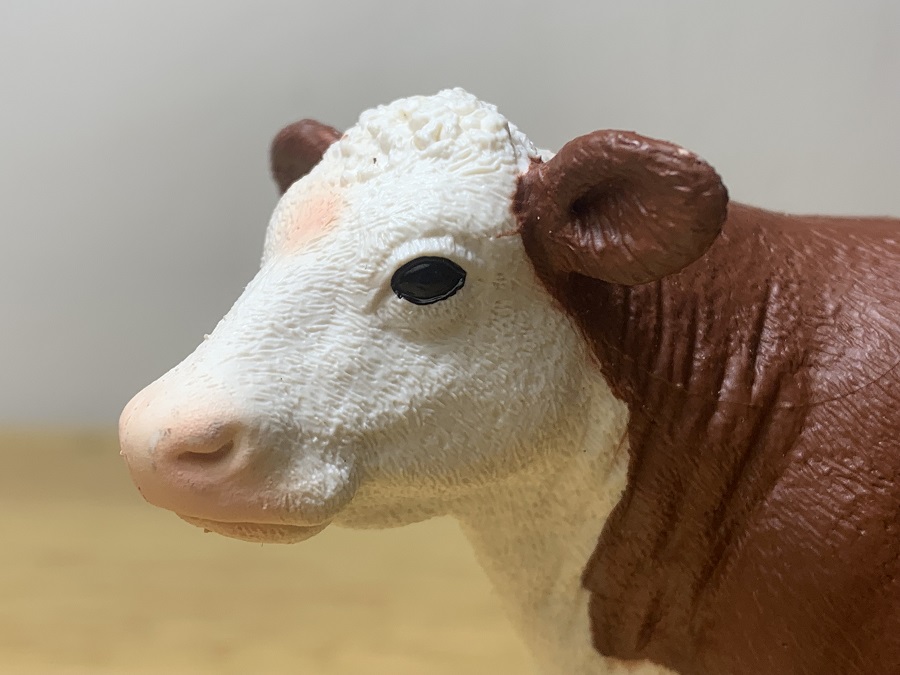
The figure is well detailed with a short coat of hair etched across the hide. Longer hair is sculpted in and around the ears and tight, curly hair is sculpted atop the head. Long hair is also present on the switch, at the end of the tail. Skin folds are bunched up around the neck and behind the forelimbs. The tail hangs free on this figure, unlike the previously reviewed Holstein with the tail attached to the backside. The figure has a modestly sized udder with four nipples. The hooves have grooves sculpted into them, giving the illusion of layered keratin. Both horned and polled (hornless) strains of Hereford exist, and this figure represents a polled cow.
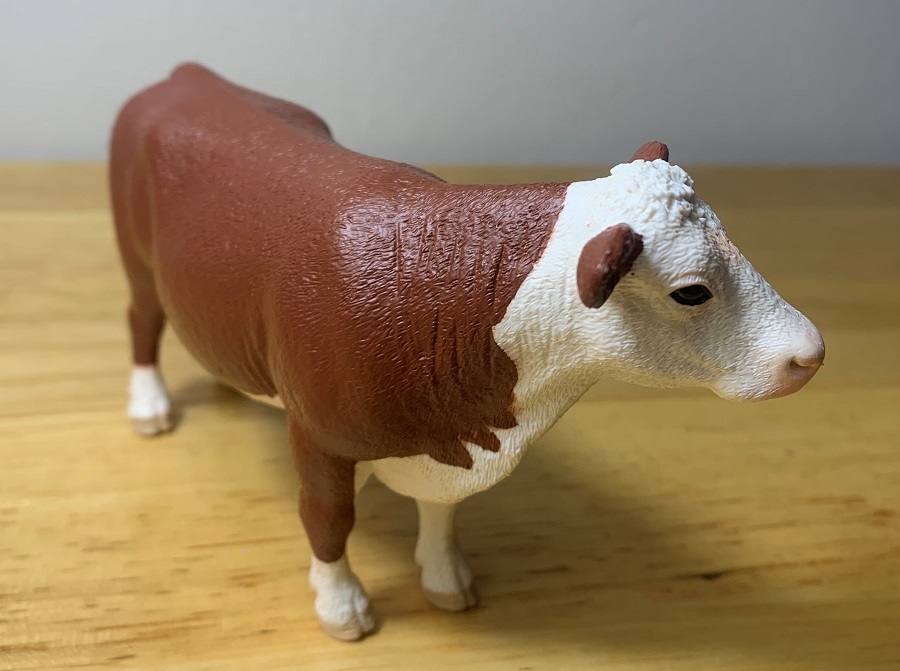
This Hereford is predominantly painted in an attractive brick red color. The face is white with a pale pink spot between the eyes. White continues down the dewlap, across the belly, and down the legs below the hocks, as well as the switch at the end of the tail. White coloration can also extend down the back in this breed, and this is the case in Schleich’s previous and now retired Hereford figure. The nose and udder are pink, eyes glossy black, and hooves, tan.
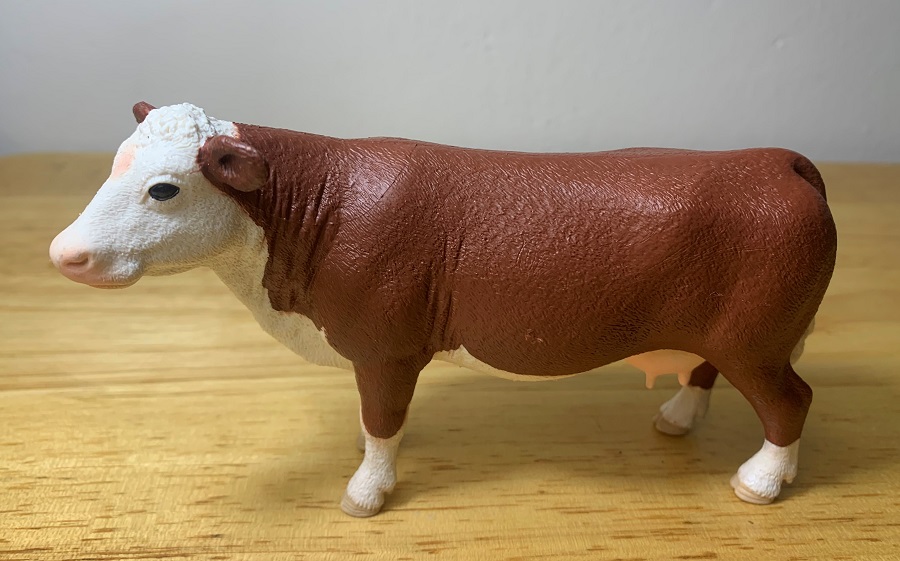
Several different options exist for Hereford cattle figures, both in production and retired. Of those in production I find this one to be the best. Safari’s looks more like a calf than an adult cow, and although CollectA’s is quite good I feel like this one edges it out. When I saw it online, I knew this Hereford was the one to have, and I was thrilled to find it in person. The Schleich Hereford is currently in production and retails for about $7.99.

Disclaimer: links to Ebay and Amazon on the AnimalToyBlog are affiliate links, so we make a small commission if you use them. Thanks for supporting us!




Nice review. I must admit, I have the most recent CollectA one and I much prefer it (it was the first cattle I purchased).
Well I look forward to your review of it, maybe I made a mistake. 😉
Looking at pictures online I don’t like how the CollectA’s figure appears taller in the back than in the front. The pink around the eyes make it look like it has, well, pinkeye. And it has some other peculiarities I’m not fond of. But I’m judging it based solely on online production photos.